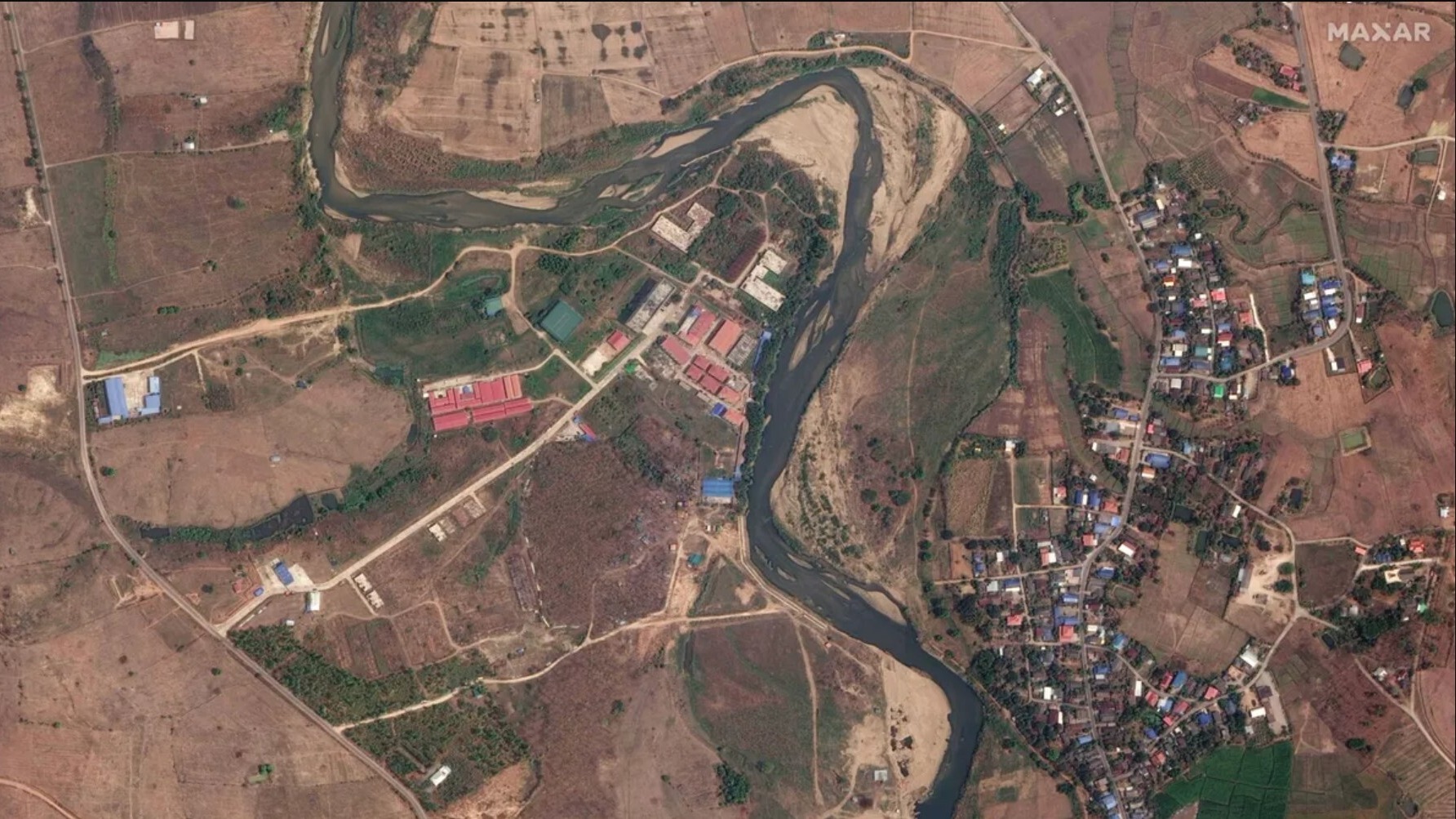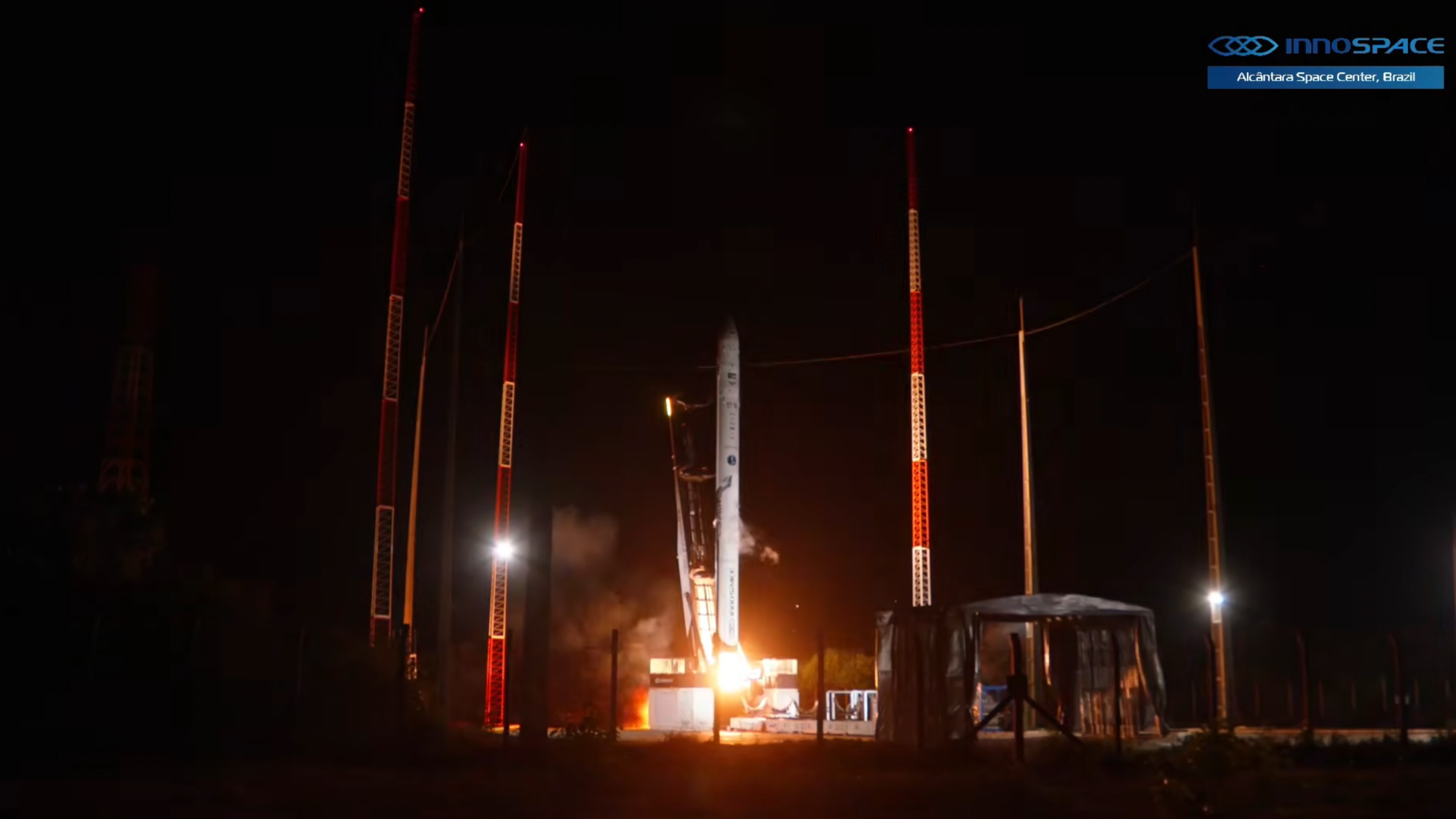Satellites spy on human trafficking 'compounds' (photo)
Slaves are said to be trapped in these facilities.

Satellite images are helping human rights organizations monitor human trafficking hotspots.
The International Justice Mission (IJM) says a partnership with the space technology company Maxar is allowing it to track the growth of "compounds," places where people are forced to work as online scammers in Southeast Asia. The IJM publicized this effort in a tweet that featured three years of imagery captured by Maxar Earth-observing satellites.
Border towns in Myanmar like Shwe Kokko and Lay Kay Kaw, for example, "host gambling and entertainment complexes developed by Chinese investors" accused of human rights violations, according to the Financial Post.
"People from other nations are tricked into taking jobs and then put into virtual captivity and forced to work in call centers conducting internet scams," the Post wrote in June of the accusations levied.
Related: Actor George Clooney using satellites as sentinels of Sudanese rights
The United Nations has tracked at least 225,000 human trafficking victims around the world in the past 20 years. Among the most vulnerable are women and those living in areas in conflict, according to the UN.
According to Reuters, the rise of human trafficking was the centerpiece discussion of the summit of the Association of Southeast Asian Nations (ASEAN) on May 10, during which leaders in the region pledged action on the issue.
Breaking space news, the latest updates on rocket launches, skywatching events and more!
Thousands of individuals confined in such operations have been "lured by social media posts promising well-paid jobs in countries like Cambodia, Laos and Myanmar," Reuters reported.
ASEAN's statement said that technology, though an "indispensable element" of human lives around the world, has "generated risks and consequences of technology abuse, in facilitating transnational and organized criminal activities."
No country is immune from trafficking, but Southeast Asia is said by experts to have an inordinate number of victims. ASEAN thus pledges to work regionally to find victims or potential victims, as well as to take into account factors that affect vulnerability such as "gender, ethnicity, disability, age" — not to mention poverty.
Aside from examining compounds from orbit, human trafficking can also be detected by other satellite means. Data from satellites operated by the San Francisco-based company Planet, for example, is used by Stanford University's Human Trafficking Data Lab to seek out "forced labor" in deforested areas of Brazil's Amazon rainforest.
Stanford officials stated in 2022 that they hope to develop an algorithm that would alert investigators to sites actively being used; increased charcoal is often a telltale sign of deforestation underway, for example. Quick action may increase enforcement while more easily rescuing victims.

Elizabeth Howell (she/her), Ph.D., was a staff writer in the spaceflight channel between 2022 and 2024 specializing in Canadian space news. She was contributing writer for Space.com for 10 years from 2012 to 2024. Elizabeth's reporting includes multiple exclusives with the White House, leading world coverage about a lost-and-found space tomato on the International Space Station, witnessing five human spaceflight launches on two continents, flying parabolic, working inside a spacesuit, and participating in a simulated Mars mission. Her latest book, "Why Am I Taller?" (ECW Press, 2022) is co-written with astronaut Dave Williams.
